This is the 14th post in a series of Nikon D850 tests. The series starts here.
I dedicated to try another lens than the 105/1.4 on the D850 and see if the autofocus (AF) behavior changed. I chose the 58 mm f/1.4. I first ran a set of runs using the Focus Shift Shooting feature of the D850 to see how much longitudinal chromatic aberration (LoCA) the lens had. It helps to know this when evaluating the AF performance.
Here’s the test protocol:
- Nikon 58 mm f/1.4 on D850.
- ISO 64
- Focus shift, silent shutter option
- 100 steps
- Minimum step size (1)
- Aperture exposure mode
- f/1.4 through f/f/5.6 in whole stops
- Wescott LED panels set to 5500 K.
- Target distance, 3 meters.
I used Fast Raw Viewer to discard the really out of focus images and put the rest through my processing pipeline: dcraw in document mode, MTF Mapper, Matlab, and Excel.
The vertical axis is MTF50, measured in cycles per picture height (cy/ph). The shot taken with the lens focused to the closest position is on the left, numbered step 0. There are 20 more exposures plotted. There is no way to know the focused distance for these exposures. You can see that the steps are much larger than the ones I use when I’m measuring LoCA and focus shift with the razor blade and the Cognisys rail. I ended up throwing away 80 images from each set.
The rest of the f-stops:
There is a moderate amount of LoCA. Peak green channel sharpness is obtained at f/4. The curves don’t get wider as you stop down because the camera is making the steps bigger as you stop down.
The next step was to test the contrast-detection autofocus (CDAF) system. I used a similar protocol:
- Nikon 58 mm f/1.4 on D850.
- ISO 64
- AF-S, single servo mode
- Release priority: focus
- Aperture exposure mode
- f/1.4 through f/4 in whole stops
- 32 exposures at each f-stop
- Live view on
- Electronic shutter on
- Nikon remote release in intervalometer mode
- Wescott LED panels set to 5500 K.
- Target distance, 3 meters.
The results wide open:
The lighter blue line is the average (mean) MTF50 of all 32 images in each plane of the target. The orange and gray lines have the standard deviation of the results (sigma) subtracted from and added to the mean. About 70% of the data points would lie between those two lines if the data were Gaussian. The yellow line is the best result in each series, and the dark blue line is the worst. The green line is the best result from the runs with Focus Shift Shooting.
You can see that the camera doesn’t come close to as sharp as the red channel can get. That’s not a problem in a lens, like this one, that has a lot of LoCA. You wouldn’t want the CDAF system to maximize the sharpness of the red channel at the expense of the more important green one.
Speaking of the green channel, here it is:
Now the camera is coming pretty close to the best that it can do. It’s not as good as it looks because the Focus Shift Shooting feature’s minimum step size is not small enough to find the sharpest distance, but it’s close.
The blue channel actually does better than the Focus Shift Shootin results. Too bad the blue channel is the least important one.
Up to now, I’ve only used the center of a three-dimensional target that looks like this:
When mounted on a door and seen by the camera, it shows up as:
For the lens wide open, with the camera focusing on the middle plane, the stats for the all three planes are as follows:
The camera is on average focusing properly with the green plane sharpest in the middle plane.
It doesn’t get much better than this. Too bad PDAF isn’t as accurate. How accurate is that? See the next post.
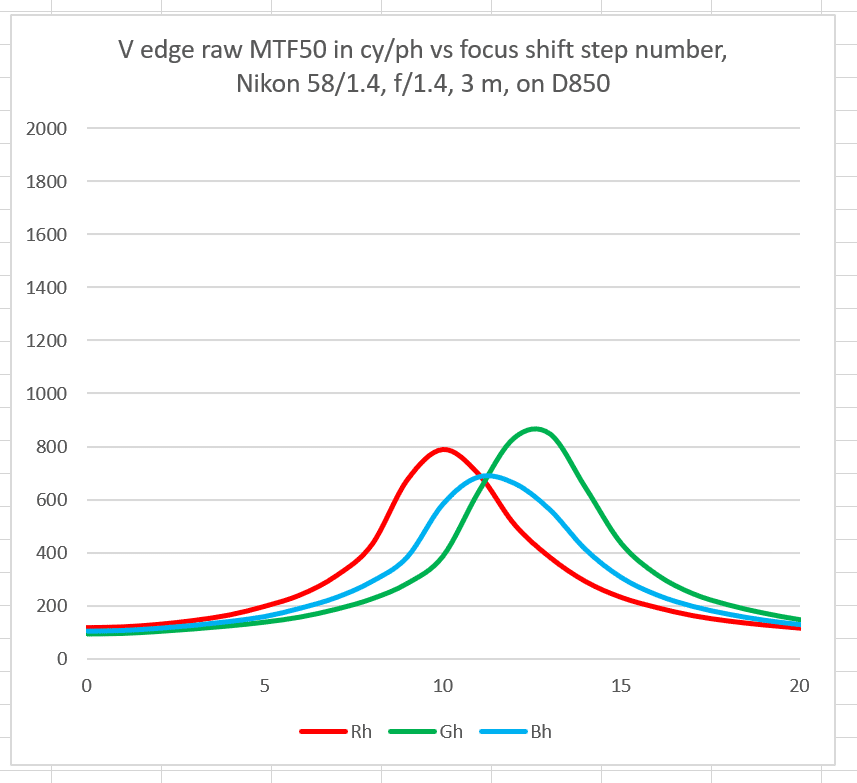
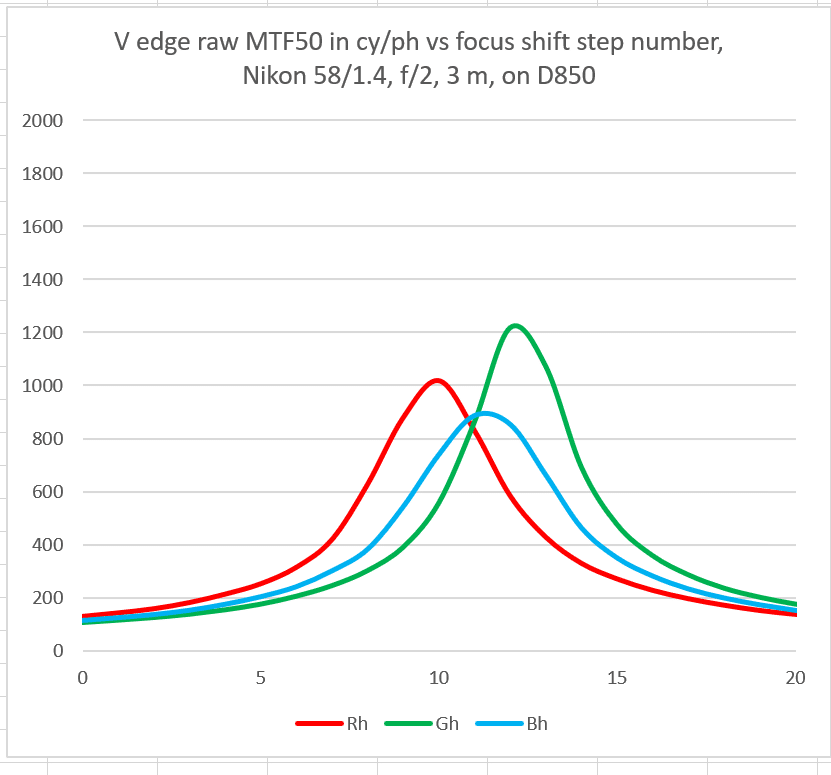
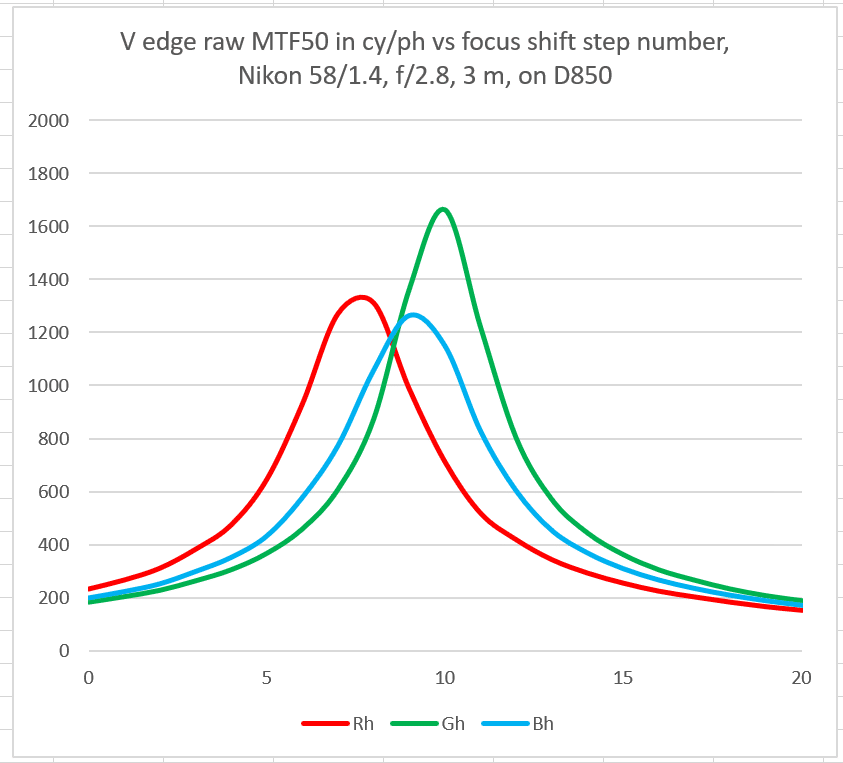
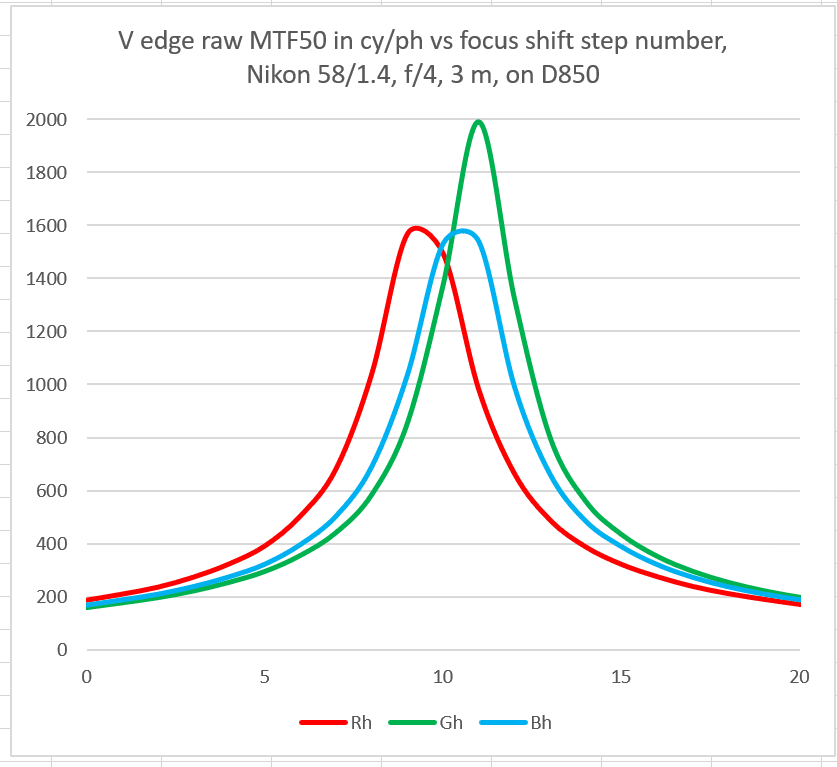
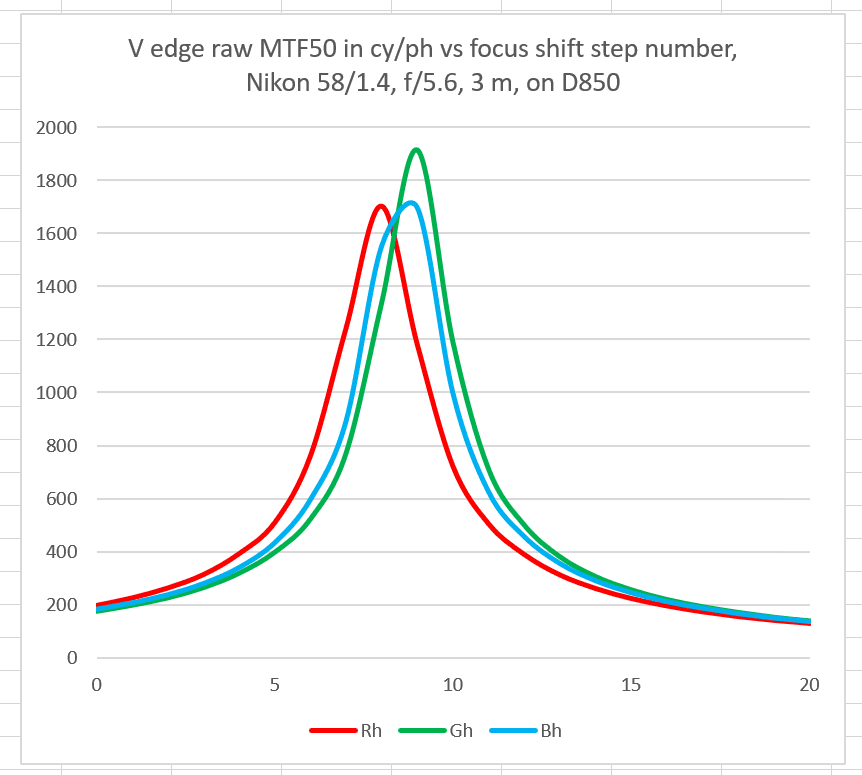
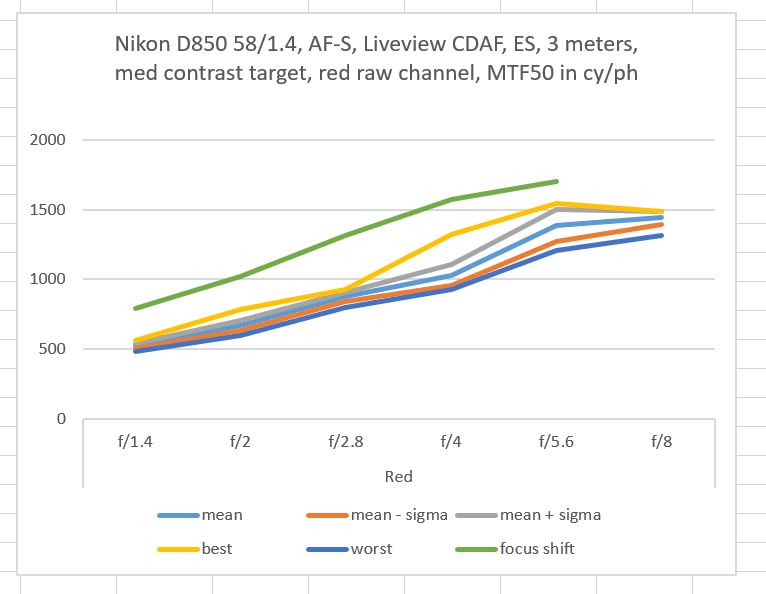
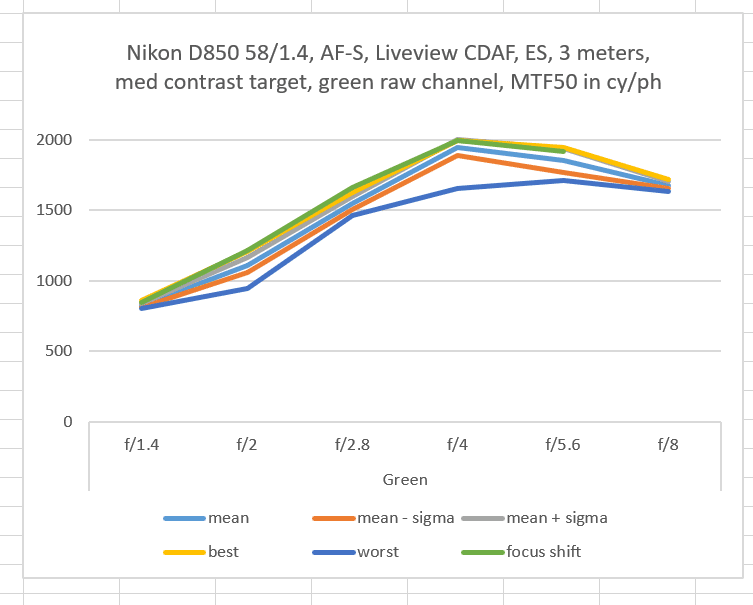

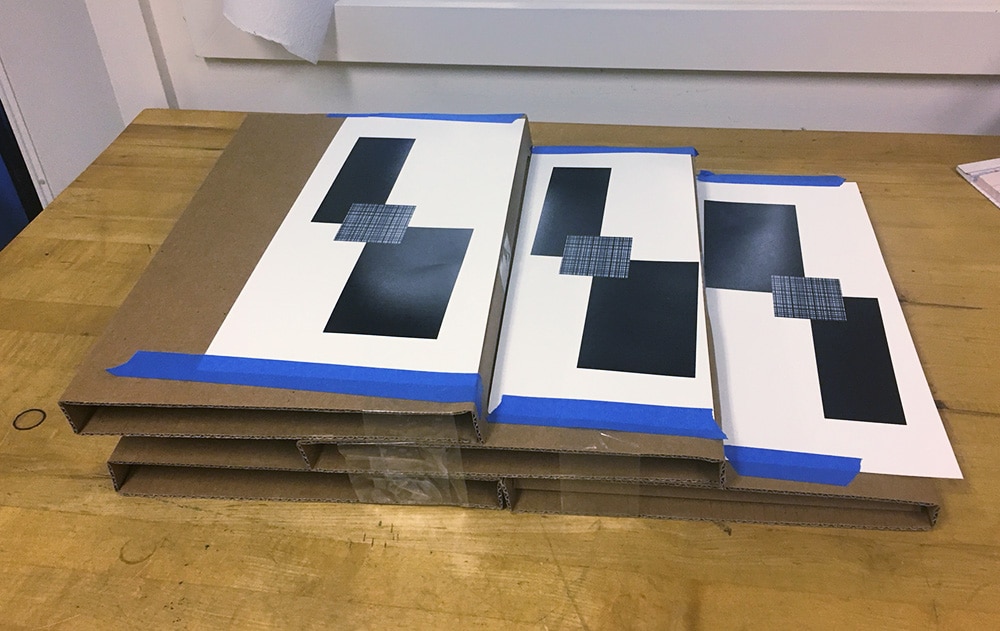
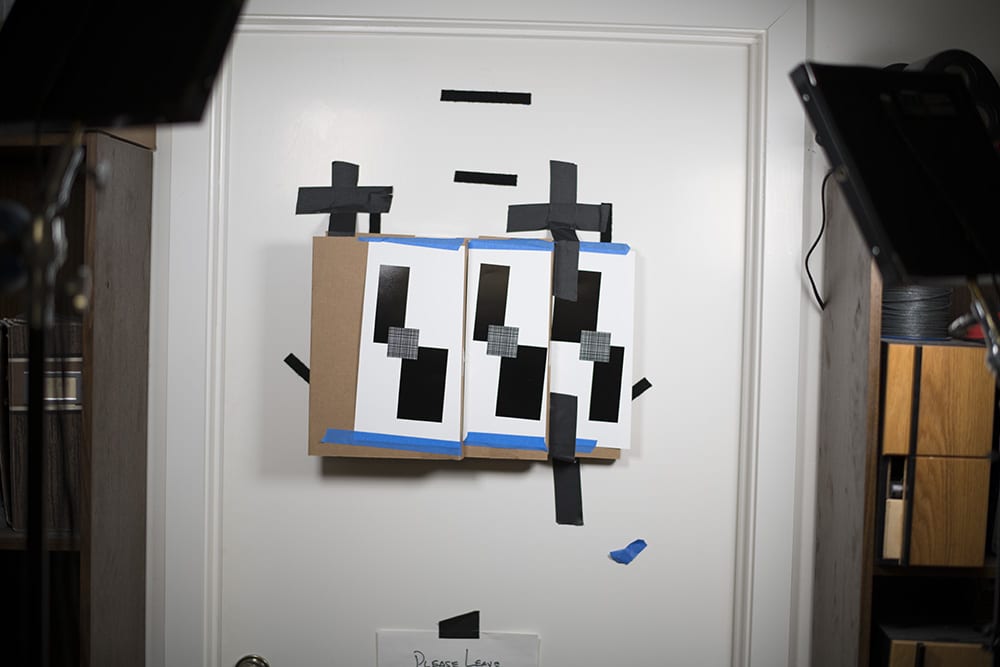
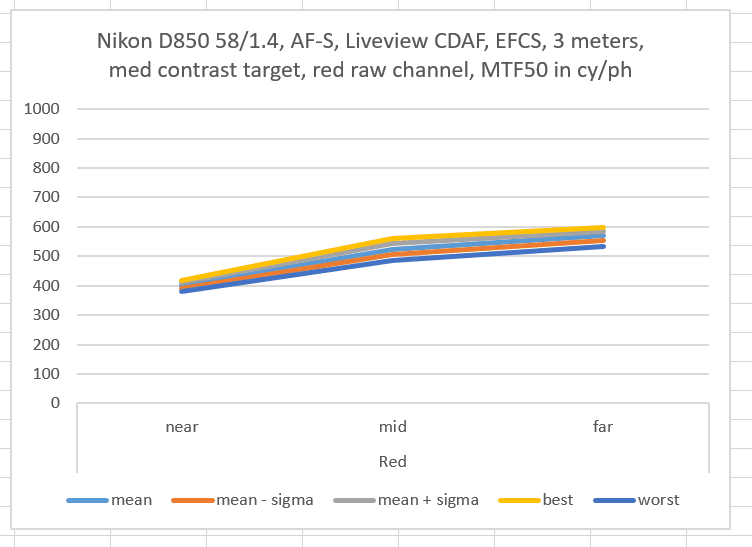
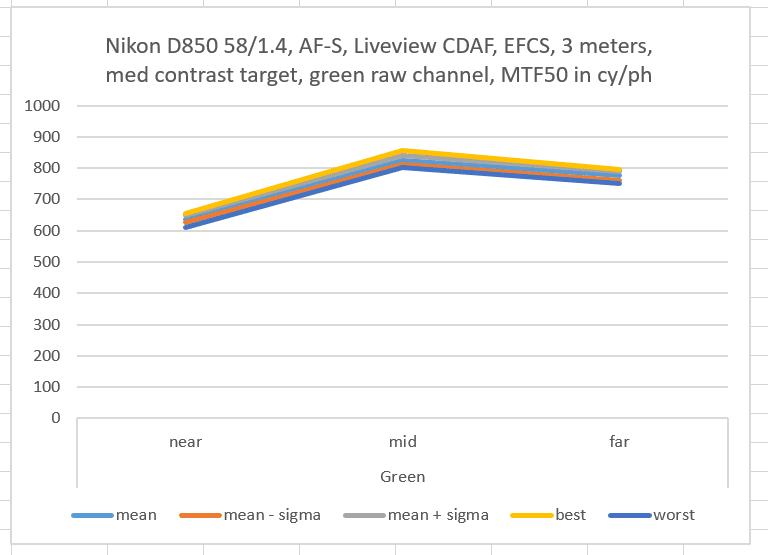
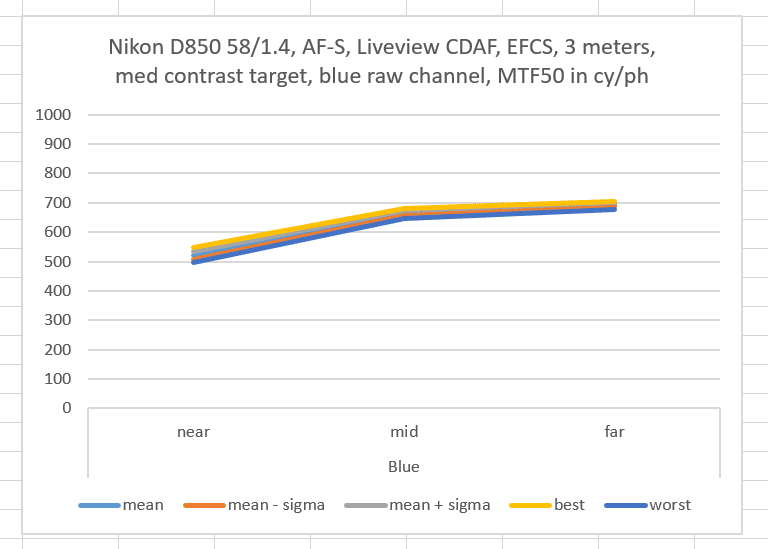
Leave a Reply